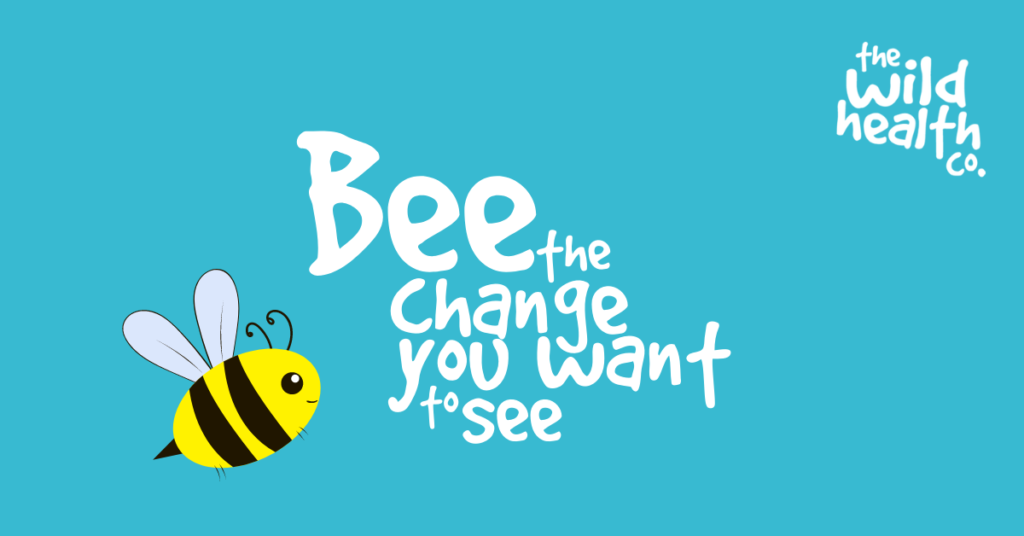Last week, the bees stole the spotlight on World Bee Day. In our blog, “The Importance of Bee-ing Earnest,” we raised awareness of how you can help your local bee population, including planting more, supporting local farmers, and helping them support the environment. This time, we’re letting you know how to bee the change you want to see!
Planting the seeds
Over the past week, here at the Wild Health Co, we have been busy – like the bees – taking part in making sure our stripey friends are well looked after.
Planting new flowers in your gardens, on your balconies, or in window boxes means that bees have a greater opportunity to pollinate. This creates much greater biodiversity and boosts the health of the environment.
Giving bees that diversity can help us understand how healthy our local ecosystem is. A happy healthy bee means a strong and stable environment.
That’s why we have added new plants to our gardens and allotments in an effort to give the bees what they want.
City Ecosystems
For those of you who live in cities, creating a better ecosystem seems like an impossible task, because you’re surrounded by concrete, steel, petrol fumes, and so on. However, you can still make a difference.
You have the power to push authorities to introduce more plant life along roads and railways, on the high street, or by improving green spaces. In fact, in some cases you can do it yourself by getting involved in environmental charities. They often help to plant more trees, rejuvenate green spaces, and help to make a city ecosystem much more diverse and exciting.
Eat plants to save plants
Another way to avoid pushing the ecosystem to its limits is to eat in an eco-friendly way. Obviously, not wasting food and making sure packaging is recycled properly is a good place to start.
However, making sure you eat a mostly plant-based diet could not only improve your health, but it could also help the environment as they are less ‘land hungry’. The fewer grazing animals there are, especially around woodlands, the fewer tree shoots and other plants will be eaten.
As we know, bees love their plant variety – a garden centre may be their version of heaven – so ensuring that can happen naturally is the best rejuvenation there is. To calculate the impact of your eating habits, head over to the WWF diet calculator.
Inside Out
When nature decides to pop inside for a visit, such as a curious bee, it can often stress them out and leave them with little energy. There are tricks to helping bees if you see them in this situation, however.
If you find a bee on your windowsill who looks fatigued or distressed, get a shallow dish (a spoon will do just fine) and create some sugary water for them to enjoy while they build up their energy supply. We used half a mug of water with 2 teaspoons of sugar, but this is just a guide – there are no set rules.
Then make sure the bee is comfortable in a sunny spot on a windowsill so they can warm up ready to take to the air again. If possible, and once they look more comfortable, take them outside and make sure they are ready to fly. That way you will prevent them from getting stuck inside your house again.
By following these steps like we have, you can help to protect the environment and all creatures that live in it. Whether it’s making urban areas greener, eating good food to rejuvenate the earth, or planting seeds to help out our beloved bees, there’s always something extra you can do to support the environment, both locally and worldwide.


